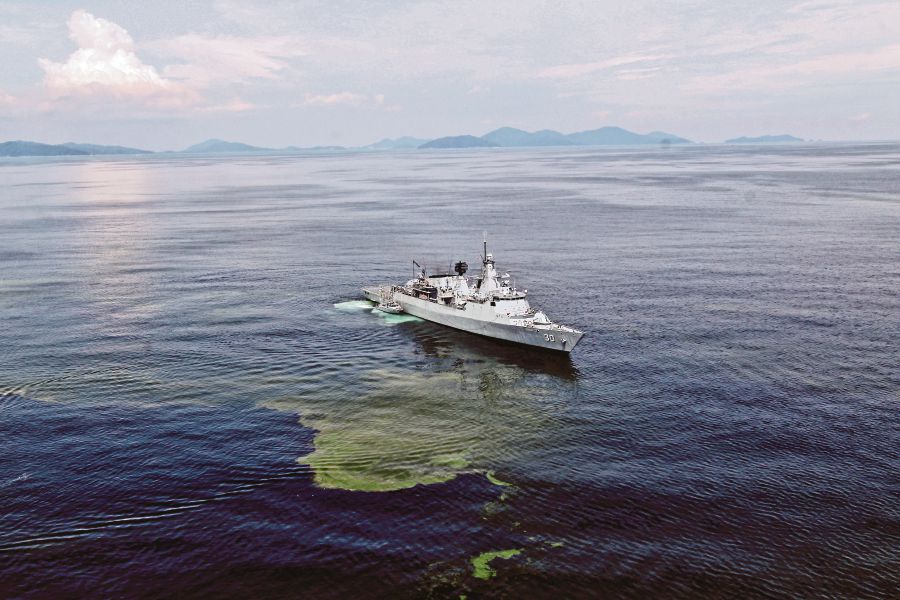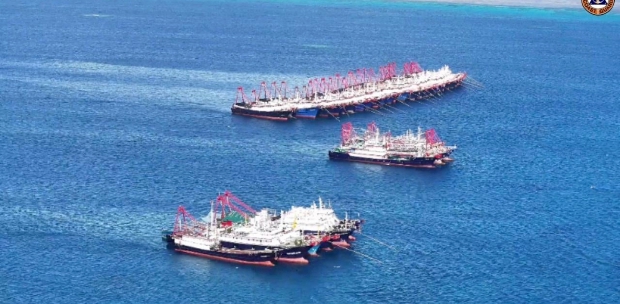AS tankers, car-carriers and other merchant vessels pass through the Straits of Malacca, unlit fishing boats criss-cross the shipping lanes at night, making it one of the most challenging sea areas of the world to transit, even during peacetime.
Should a major war ever come to Asia, those challenges could be magnified spectacularly, with hundreds of vessels abruptly leaving the international waters in the middle of the strait for what they hope might be the relative safety of the national territorial waters of nearby neutral nations.
The strait — between Thailand, Malaysia, Indonesia and Singapore — marks the entry point between the Indian Ocean and the South China Sea, a maritime chokepoint through which much of the goods manufactured in Asia pass out into the world.
It also carries much of Asia's oil and gas, including three quarters of that for China.
For now, the actual immediate threat to shipping in the region is limited, particularly compared with another major maritime area in the Gulf of Aden, where suspected Iran-backed Houthi militants have attacked multiple vessels since Hamas attacked Israel on Oct 7.
There, those attacks — as well as both attempted and successful hijackings by small boats that were, in one case, aided by a former Yemeni military helicopter — represent by far the most significant disruption to maritime trade since the height of the Somali piracy crisis in 2011.
The Straits of Malacca — 500 nautical miles long and between 40 and 155 wide — had a reputation in the 1990s and early 2000s, for repeated piracy and armed attacks until increased patrols by regional navies brought them down to manageable levels.
That progress, however, appears to have been reversed in the 2020s, something some analysts attributed to increased poverty in regional communities following the Covid-19 pandemic.
By late October, the number of incidents so far this year had reached 62, including at least three in a single October week, prompting seafaring organisations to call for greater action to prevent attacks.
In the Indian Ocean, a much larger epidemic of piracy in the 2010s was eventually reversed largely because the hiring of armed guards on merchant vessels eventually made them too hard for lightly armed pirate crews to capture.
At the start of this year, the global shipping industry ceased referring to the Indian Ocean as a "high-risk zone" — only for the recent Gaza war to cause chaos once again.
So far, at least one non-Israeli ship has been damaged in a missile strike, and US warships in the region have now shot down attacking drones and missiles on a scale unseen in recent naval history.
Those attacks are already having an impact on international shipping patterns, as well as prompting a wider reappraisal of what other regions might suddenly turn violent offshore.
"The world is on fire," one commercial vessel captain said on condition of anonymity. "We do not know what we will wake up to tomorrow."
Conflict has also come to European waters. The Ukraine war has seen the Black Sea periodically become a war zone, particularly following the unravelling of a Turkish and United Nations-negotiated deal to allow grain ships to sail.
Some shipping lines, including Maersk and ZIM, have said publicly they are now diverting vessels away from the Gulf of Aden and Suez Canal, sending them round the Cape of Good Hope in South Africa rather than risking the Red Sea.
All that would feel like just a pinprick compared with the disruption of a war in Asia, which could well see Beijing attempting to impose a blockade on vessels heading to Taiwan, as well as efforts to attack, disrupt and intercept Chinese military and perhaps civilian vessels by the US and its allies.
Indian strategists have talked of using submarines and missiles to block the Straits of Malacca entirely should they find themselves in an existential war against Beijing.
According to China expert Andrew Erickson at the US Naval War College, foreign policy thinkers in Beijing have long referred to China's dependence on energy imports by that route as the "Malacca Dilemma".
The prospect of blockade has not escaped the Pentagon. Since the election victory of Filipino President Bongbong Marcos, the US has also made agreements to significantly increase its military presence at the other end of the South China Sea overlooking the Luzon Strait, another maritime "chokepoint" that would be particularly critical in the event of a Taiwan invasion.
The writer is a columnist for Reuters
The views expressed in this article are the author's own and do not necessarily reflect those of the New Straits Times






